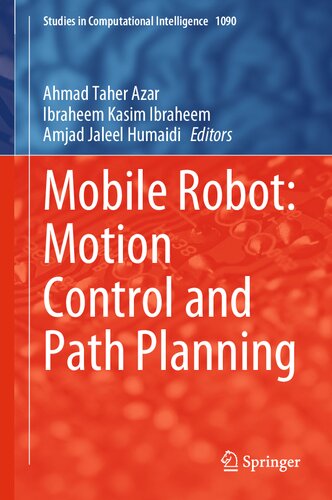

Most ebook files are in PDF format, so you can easily read them using various software such as Foxit Reader or directly on the Google Chrome browser.
Some ebook files are released by publishers in other formats such as .awz, .mobi, .epub, .fb2, etc. You may need to install specific software to read these formats on mobile/PC, such as Calibre.
Please read the tutorial at this link: https://ebookbell.com/faq
We offer FREE conversion to the popular formats you request; however, this may take some time. Therefore, right after payment, please email us, and we will try to provide the service as quickly as possible.
For some exceptional file formats or broken links (if any), please refrain from opening any disputes. Instead, email us first, and we will try to assist within a maximum of 6 hours.
EbookBell Team

5.0
60 reviewsThis book presents the recent research advances in linear and nonlinear control techniques. From both a theoretical and practical standpoint, motion planning and related control challenges are key parts of robotics. Indeed, the literature on the planning of geometric paths and the generation of time-based trajectories, while accounting for the compatibility of such paths and trajectories with the kinematic and dynamic constraints of a manipulator or a mobile vehicle, is extensive and rich in historical references. Path planning is vital and critical for many different types of robotics, including autonomous vehicles, multiple robots, and robot arms. In the case of multiple robot route planning, it is critical to produce a safe path that avoids colliding with objects or other robots. When designing a safe path for an aerial or underwater robot, the 3D environment must be considered. As the number of degrees of freedom on a robot arm increases, so does the difficulty of path planning. As a result, safe pathways for high-dimensional systems must be developed in a timely manner.
Nonetheless, modern robotic applications, particularly those requiring one or more robots to operate in a dynamic environment (e.g., human–robot collaboration and physical interaction, surveillance, or exploration of unknown spaces with mobile agents, etc.), pose new and exciting challenges to researchers and practitioners.
For instance, planning a robot's motion in a dynamic environment necessitates the real-time and online execution of difficult computational operations. The development of efficient solutions for such real-time computations, which could be offered by specially designed computational architectures, optimized algorithms, and other unique contributions, is thus a critical step in the advancement of present and future-oriented robotics.